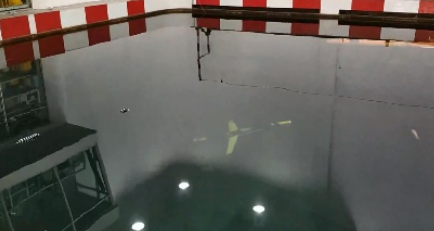Recently, an underwater gliding snake-like robot (UGSR), which combines the characteristics of an underwater glider and an underwater snake-like robot, is proposed by Shenyang Institute of Automation, Chinese Academy of Sciences. The robot can realize gliding motion driven by net buoyancy and multiple swimming gaits driven by joint torque, showing the advantages of strong endurance and good maneuverability. The study was published on Science China-Information Sciences.
There exist several issues that can hinder the performance of gliding motion of the robot, including nonlinear and coupled dynamic system, disturbance caused by uncertain real fluid, measurement noise of sensors and actuator error, etc. Besides, the gliding velocity is also difficult to measure under water.
To solve these problems, the researchers proposed a framework of nonlinear closed-loop control systems. The complex nonlinear system is transformed into an equivalent linear system through decoupling and feedback linearization. Then, a sliding mode controller (SMC) based on the reaching law method is designed to reduce chattering and achieve robust control. The unscented Kalman filter (UKF) is used to filter the measurement noise and estimate the system state. This method deals with the nonlinear transfer of mean and covariance through unscented transformation, retains the higher-order terms, and has the advantages of high accuracy and strong stability.
The proposed closed-loop control framework is universal for some other nonlinear systems. This research was supported by National Key Research and Development Project of China.

gliding motion of the snake-like robot (Image by Jiang CHANG)
Contact:
Tianjiao DAI
Email: daitianjiao@sia.cn